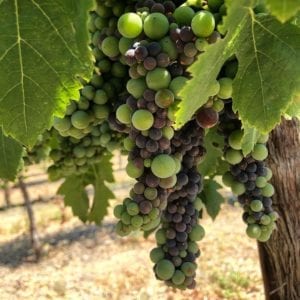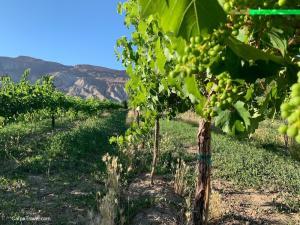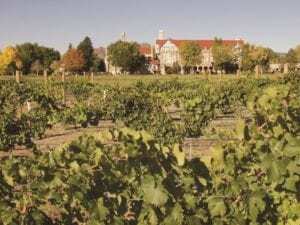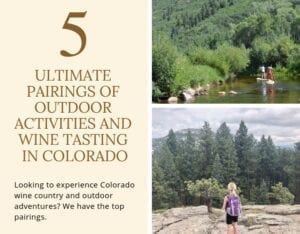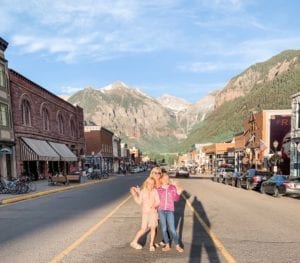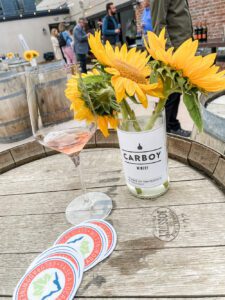Discover Colorado
Wine Country
Our Colorado Wine Country Travel Guide shares a brief history of the state’s wine country, terroir, where to sip, where to stay and things to do beyond the vines
Colorful Colorado is known for its majestic mountains, world-class ski resorts and tons of breweries. But for all the wine connoisseurs out there, Colorado is also home to two designated American Viticultural Areas (AVAs, wine growing regions) and more than 150 wineries, many of which produce award-winning wines.
This Colorado Wine Country Travel Guide is designed to help you explore Colorado’s wine scene. Be it downtown Denver’s urban wineries, to the wine country in the Grand Valley, and everywhere in-between.
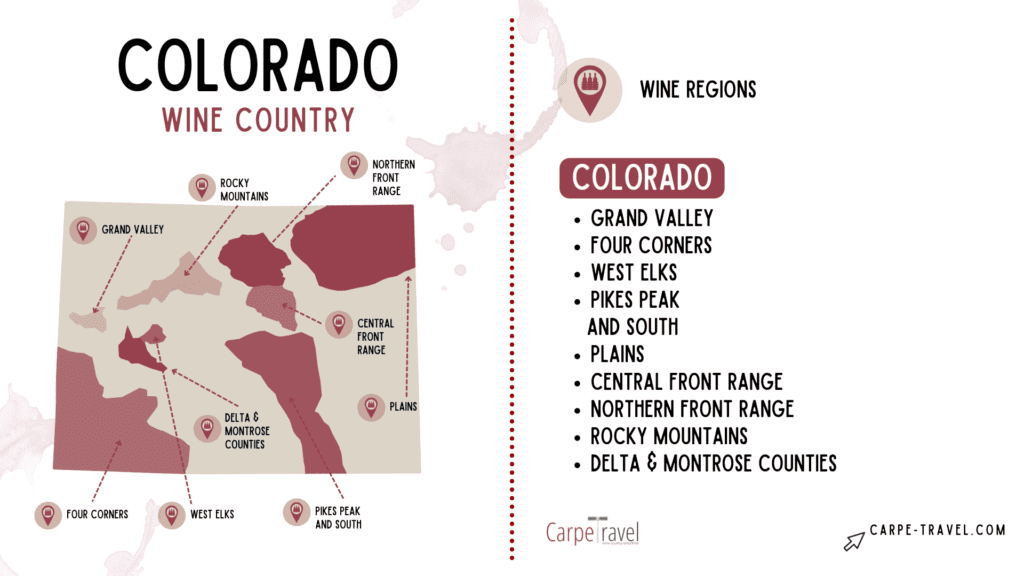
WHERE IS COLORADO WINE COUNTRY?
There are only two American Viticultural Areas (AVAs) in Colorado – the West Elks AVA and Grand Valley AVA. The Grand Valley AVA runs along the Colorado River between Palisade and Grand Junction. The West Elks AVA runs along the North Fork of the Gunnison River between Paonia and Hotchkiss. There are also a few non-AVA wine regions, such as Manitou Springs, Canon City, Pikes Peak, Durango, and the Four Corners region.
BEST TIMES TO VISIT
Early Fall is harvest. Temperatures are still warm, yet not boiling during the day making patios and picnics the perfect pairing. This is peak season, if you can travel during the week, you’ll find lower prices. Summer is a great time to visit for outdoor activities but the day time temperatures are hot!
GETTING TO COLORADO WINE COUNTRY
Palisade is about a six hour drive from Denver. You can fly into Denver International Airport and drive or try to fly into the Grand Junction Regional Airport (GJT). There are few direct flights to/from GJT so you will likely connect in Denver. Another option, although it's still a four hour drive is flying into the Vail Airport (EAG).
TOP GRAPE VARIETIES IN COLORADO
Colorado has some of the highest elevations of vineyards – not just in the United States, but the entire world! Argentina is the only wine region that has a higher elevation than Colorado. Most of the vineyards in the state are between 4,000 and 7,000 feet above sea level. The state’s warm days, cool nights and low humidity paired with high elevation is a perfect match for viticulture. Producing big, bold fruit for wines.
White Wine Grapes
RED Wine Grapes
The Grand Valley in Colorado was nominated as one of the top 10 wine destinations in the entire world in Wine Enthusiasts 2018.
George A. Crawford, who later became the Colorado Governor founded Grand Junction, was the first person to see the Grand Valley’s potential for grape production. In 1881 he planted 60 acres of vines on Rapid Creek above Palisade, along the Colorado River. Wine production in Colorado was born. Like all states within the U.S. production came to a screeching halt in 1920 when National Prohibition took effect. It wasn’t until 1977 that wine production in Colorado began to bud again.
TERROIR
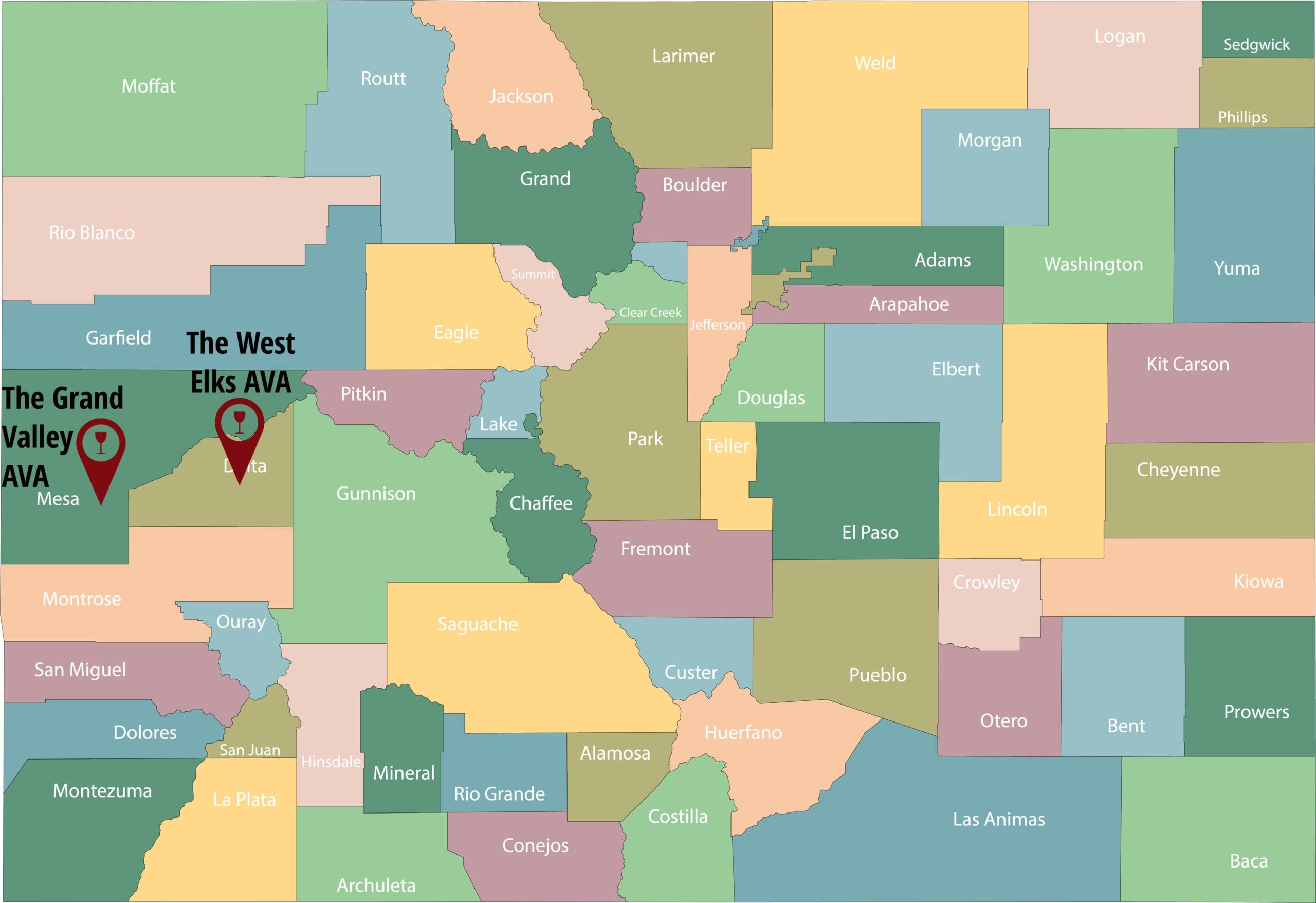
Colorado has some of the highest elevations of vineyards – not just in the United States, but the entire world! Argentina is the only wine region with a higher elevation than Colorado. Most of the vineyards in the state are between 4,000 and 7,000 feet above sea level.
There are only two American Viticultural Areas (AVAs) in Colorado – the West Elks AVA and Grand Valley AVA. The Grand Valley AVA runs along the Colorado River between Palisade and Grand Junction. Grand Valley, is the larger of the two and home to the town of Palisade, is considered the heart of the Colorado wine region. The West Elks AVA runs along the North Fork of the Gunnison River between Paonia and Hotchkiss. Both of Colorado’s wine regions are fairly close to one another.
These two areas which neighbor one another are also home to the famous Colorado peaches and fruit orchards. When it comes to wine, the two AVA’s makeup 100+ commercial wineries that produce 90 percent of Colorado’s wine.
There are also a few non-AVA wine regions in Colorado, including Manitou Springs, Canon City, Pikes Peak, Durango, and the Four Corners region. In other words, a third AVA might be in the works…
If a wine is designated with the name of an American Viticultural Area (AVA), federal regulations require 85% or more of the wine is derived from grapes grown within the boundaries of that AVA and that the wine is fully finished within the AVA. Some states have stricter laws regarding the amount of grapes required in the wine.
Colorado is blessed with warm days, cool nights and low humidity. This combined with vineyards at high elevation pairs perfectly for viticulture.
The Grand Valley AVA, is the larger of the two Colorado wine regions and home to the town of Palisade, which is considered the heart of the Colorado wine region.
A number of wines from Colorado have won the Jefferson Cup, an award in the Doug Frost competition that considers new and emerging wine regions in the United States. Colorado placed in this competition for five consecutive years.

WHERE TO SIP
Colorado is home to more than 150 wineries statewide, with more than 10 urban wineries in downtown Denver.
Creekside
Cellars
Carboy
Winery
Colterris
Winery
Bookcliff Vineyards
Sauvage Spectrum
Planning Your Colorado Wine Country Vacation
COLORADO WINE TASTING ITINERARIES
WHERE TO STAY IN COLORADO WINE COUNTRY

GETTING AROUND
Getting around Palisade specifically will require a car or a bike as the tasting rooms are pretty spread apart. You can rent bicycles and follow the Palisade Fruit and Wine Byway that takes you through vineyards, tasting rooms and a variety of fruit stands. Or, you can opt to drive yourself or hire a driver.

- Denver International Wine Festival
- Food & Wine Classic in Aspen
- Telluride Wine Festival
- Taste of Vail
- MORE COLORADO WINE FESTIVALS
BEYOND THE VINES
If you’re looking for things to do besides sipping in the Colorado wineries, we have A LOT OF IDEAS for things to do in Palisade that go well beyond the vines.
The Palisade Fruit and Wine Byway, aka “The Fruit Loop” is one of the popular biking routes through the Colorado wine country. Great for adults – and kids since there are several orchard and farms stops along the way.
Burger Night on the Vineyard at Maison la Belle Vie Winery is a treat for the whole family! The outdoor patio offers stunning views of the surrounding vineyards with the Bookcliffs as the backdrop while live music fills the air.
Float the Colorado River. The two-hour float trip takes you down the Colorado River where you can view different vineyards and orchards (April to October). You can also rent a kayak, paddle board or canoe instead.
Meet the Winemakers
Carpe Travel’s wine experts sit with top winemakers from regions around the world. Check out these local interviews and learn more about the people who make your favorite wines!
Elaine Schoch is an award-winning travel writer, wine judge, American Wine Specialist and certified by the Wine & Spirit Education Trust (WSET II). At Carpe Travel she shares wine travel destination guides for ALL WINE LOVERS – from novices to experienced pros – to help them plan their wine adventures, arming them with insider tips, must-visit spots, and things to see and do beyond the vines.

